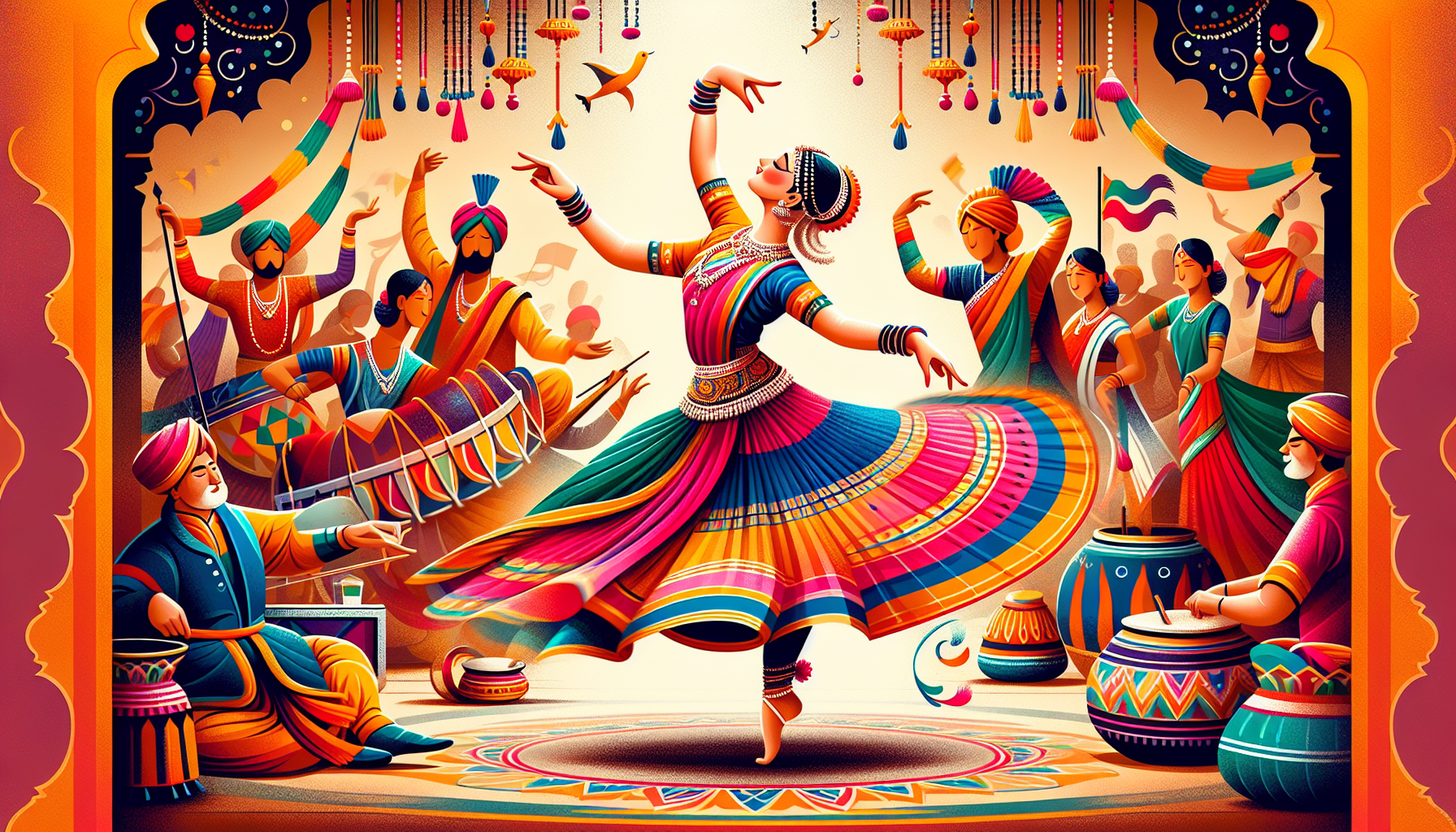India, a land of vibrant cultures and traditions, is renowned for its diverse array of traditional dance forms. Each dance form, distinct in its style, costume, and music, reflects the cultural heritage and artistic expressions unique to its region. These dances often have roots embedded deep in ancient religious texts, folklore, or historical events, making each performance a visual storytelling spectacle.
Beginning in the eastern part of India, one encounters Odissi from the state of Odisha. Known for its fluid movements and complex footwork, Odissi is one of the oldest classical dance forms. Traditionally performed as a temple dance, it embodies spiritual themes and devotion, capturing the intricate gestures and expressions that depict stories of Indian mythology.
Traveling to the south, Bharatanatyam from Tamil Nadu stands as one of the most popular and globally recognized Indian classical dances. Distinguished by its fixed upper torso, intricate footwork, and expressive hand gestures (mudras), Bharatanatyam transforms the dancer’s body into a vehicle for storytelling, drawing extensively from Hindu religious narratives.
Similarly, in Kerala, Kathakali offers a dramatic performance art merging dance, music, and acting. This stylized dance is known for its elaborate costumes, vibrant makeup, and distinctive facial expressions. With performances often drawn from the epics of Ramayana and Mahabharata, Kathakali demands masterful storytelling skills from the dancer.
In the north, Kathak finds its origins, characterized by its storytelling through swift pirouettes and delicate footwork. Unlike other classical dances, Kathak's repertoire includes intricate rhythmic patterns and fast-paced movements. It reflects the fusion of Hindu and Muslim cultures, especially seen in its costumes and musical accompaniment.
The northeastern state of Manipur presents the gracefully understated Manipuri dance. It celebrates the themes of love and devotion to Lord Krishna, with gentle swaying movements and serene expressions. Unlike the bold and vigorous dances found elsewhere, Manipuri dance is marked by its fluidity and a deep sense of spiritualism.
From the arid lands of Rajasthan emerges Ghoomar, a traditional folk dance known for its vibrant costumes and twirling movements. Performed by women, Ghoomar showcases the grace and beauty of the stances that emphasize the cultural essence of the Rajasthani people.
In Punjab, the energetic Bhangra mirrors the lively spirit of the region's agricultural lifestyle. Initially a harvest dance, Bhangra has evolved into a festive celebration, characterized by dynamic leaps, rhythmic claps, and the iconic beat of the dhol drum.
Gujarat offers the Garba, a lively and colorful dance performed during Navratri, a nine-night festival. Participants dance in circular formations, swirling and clapping along to the rhythmic music, reflecting community unity and cultural vibrancy.
These are just glimpses of the countless tapestries of dance weaving through the cultural landscape of India. While each dance form carries its own regional flavor, together they constitute a magnificent celebration of India’s artistic diversity and cultural depth. Through these traditional dances, India continues to preserve and promote its rich heritage, passing down these priceless treasures from one generation to the next.
